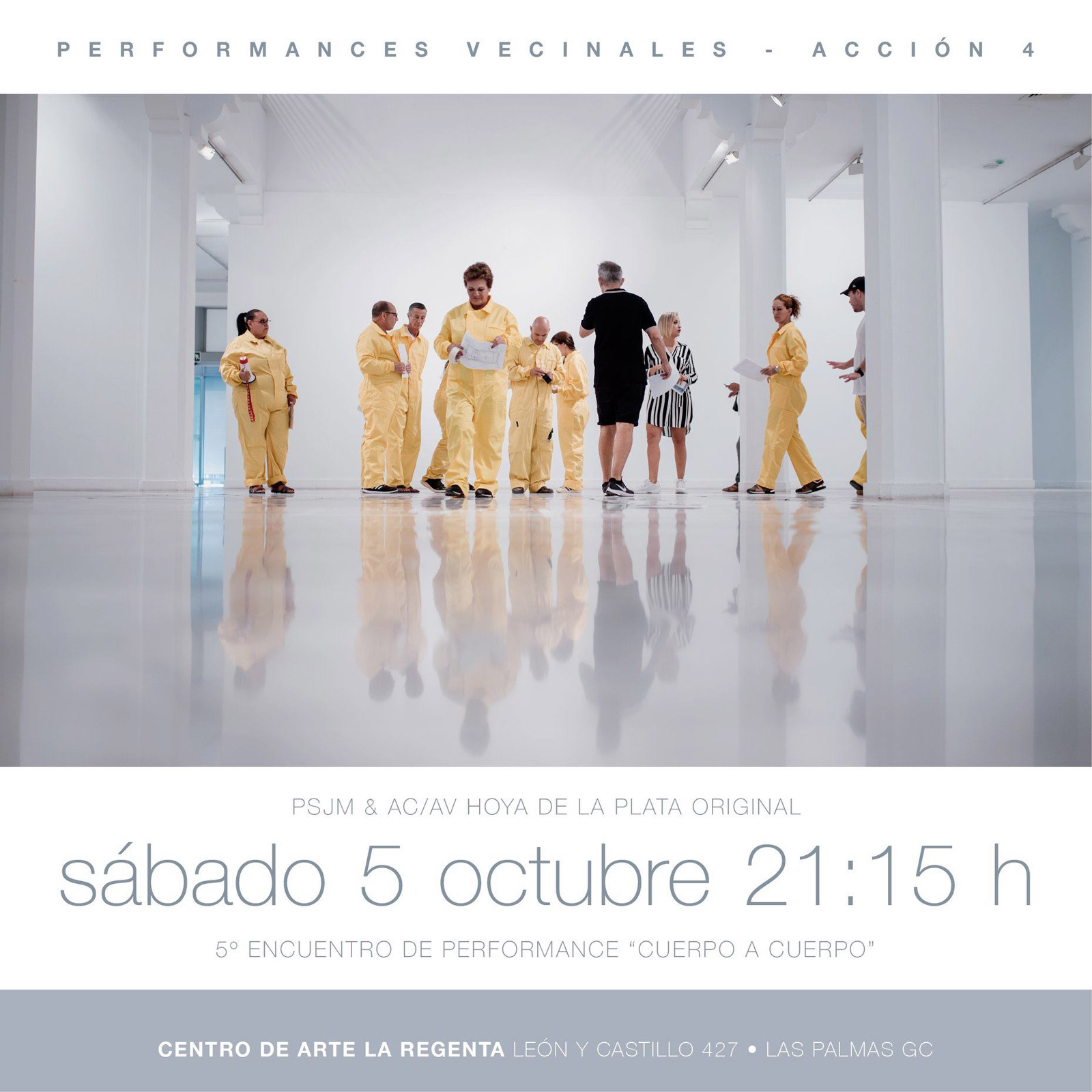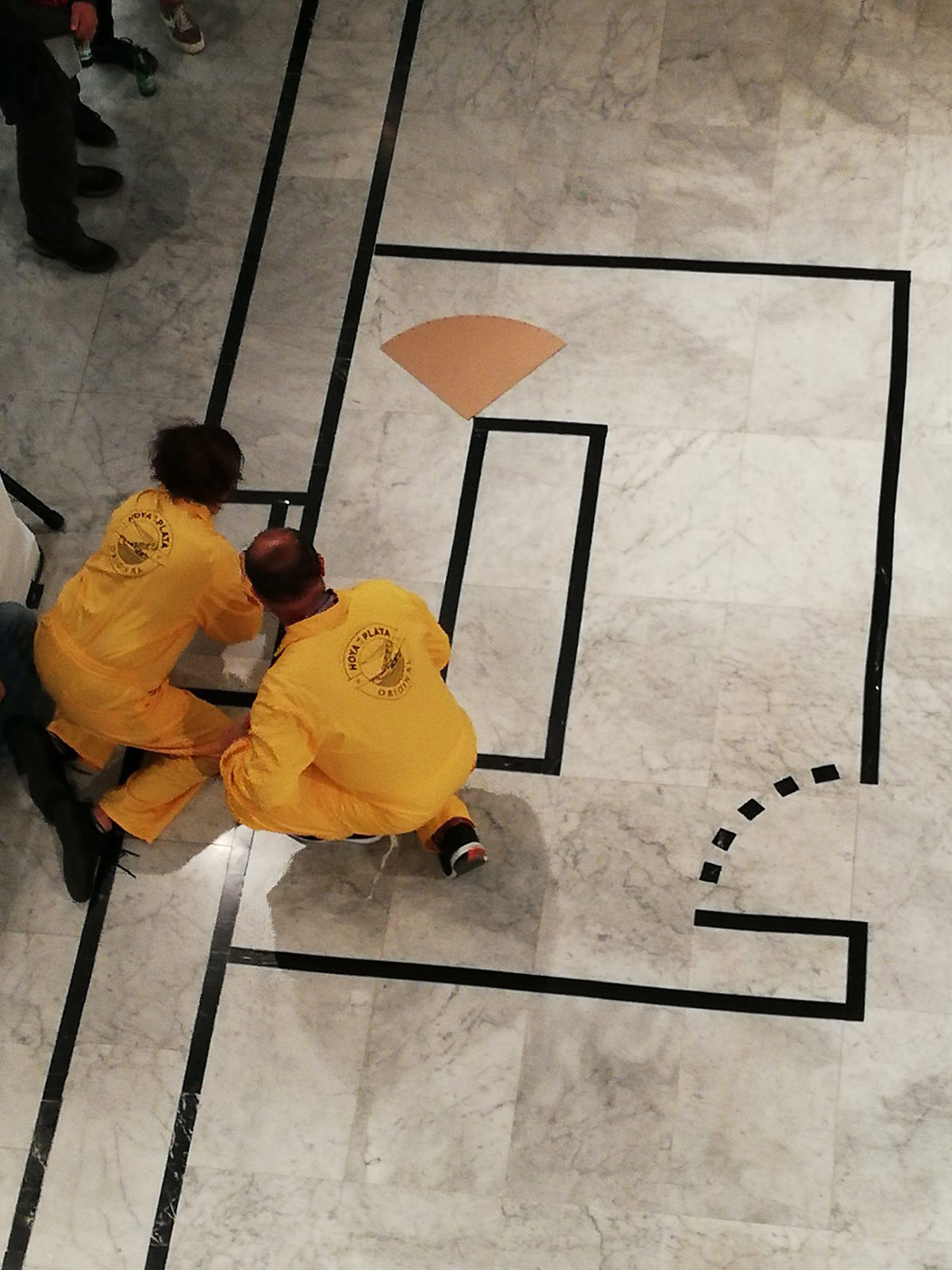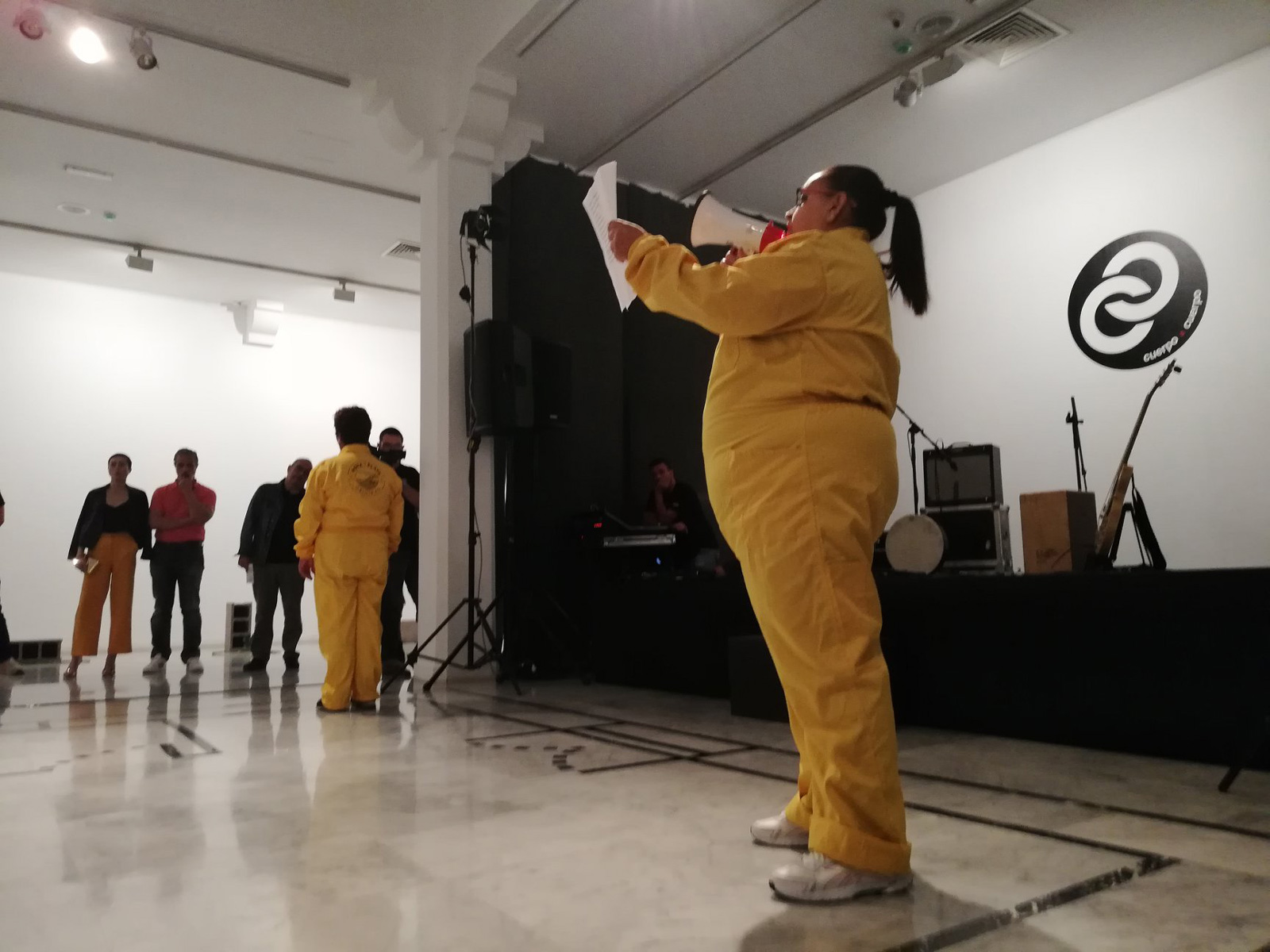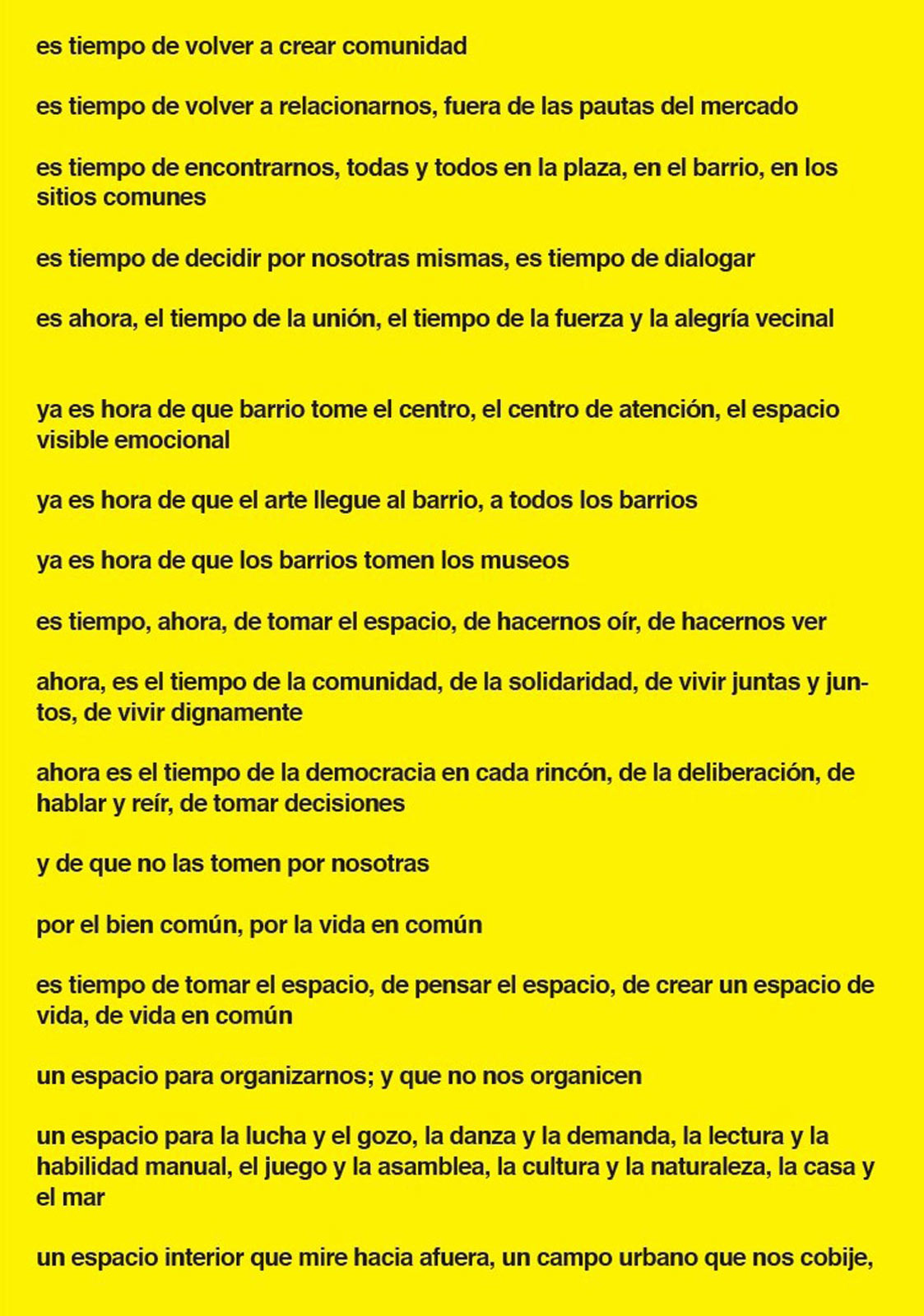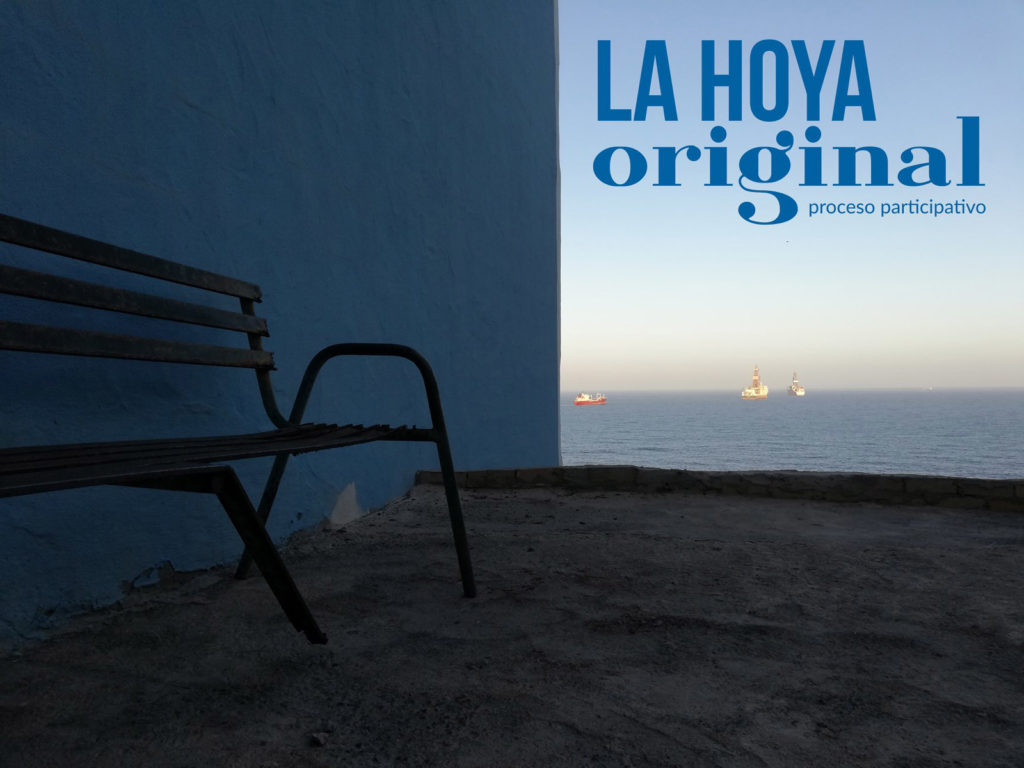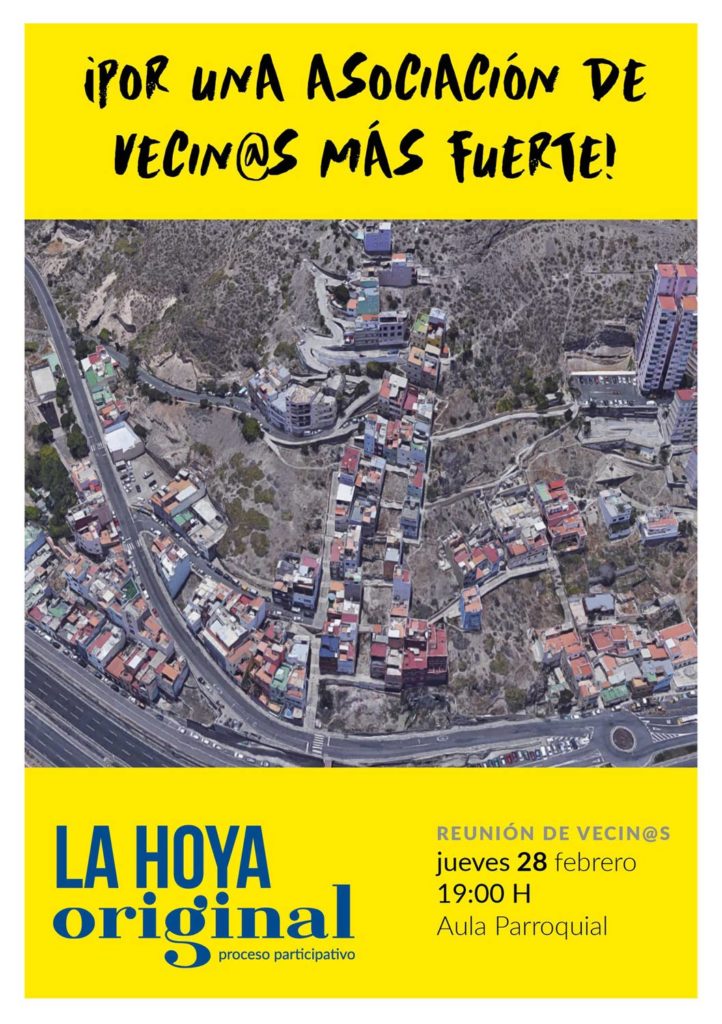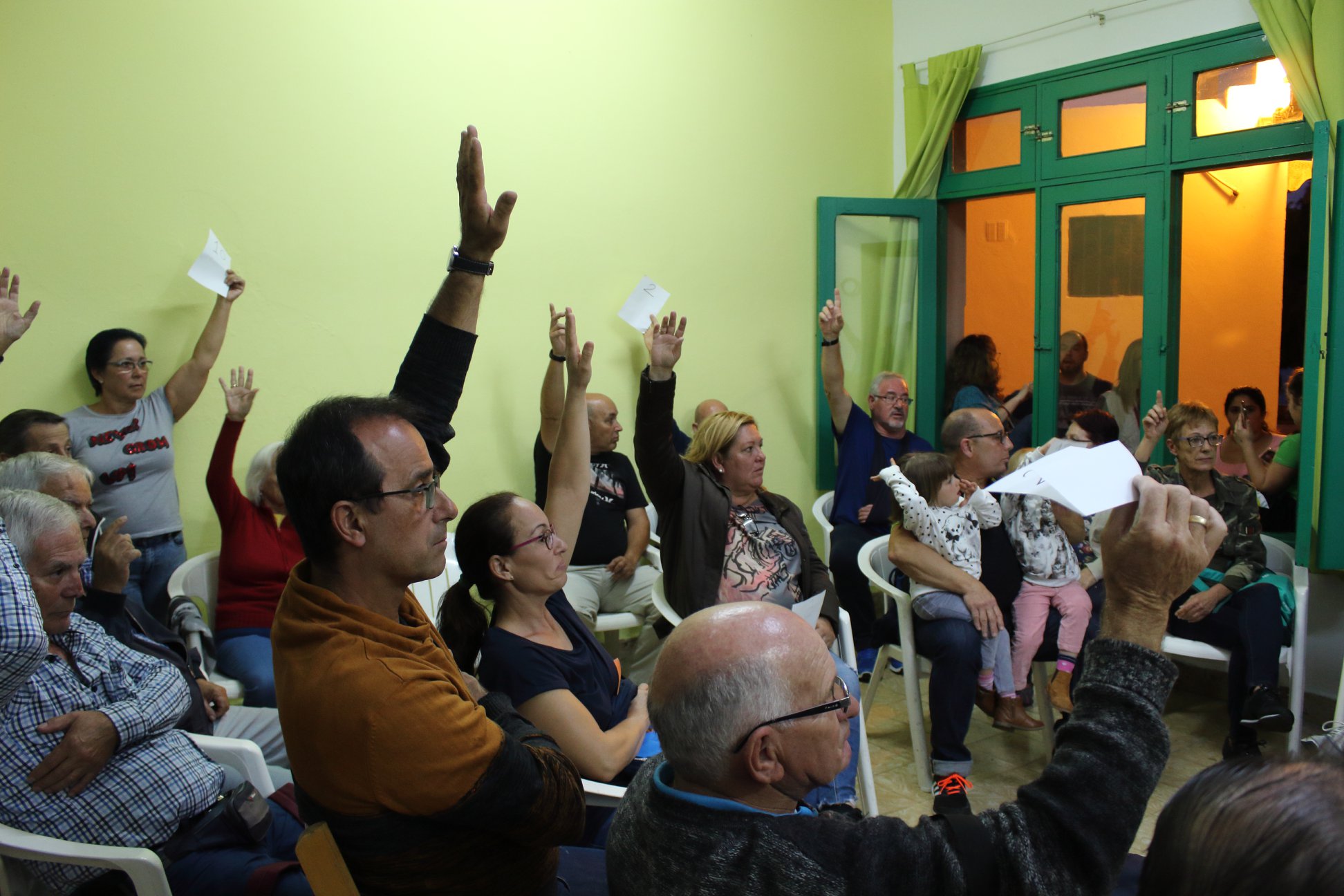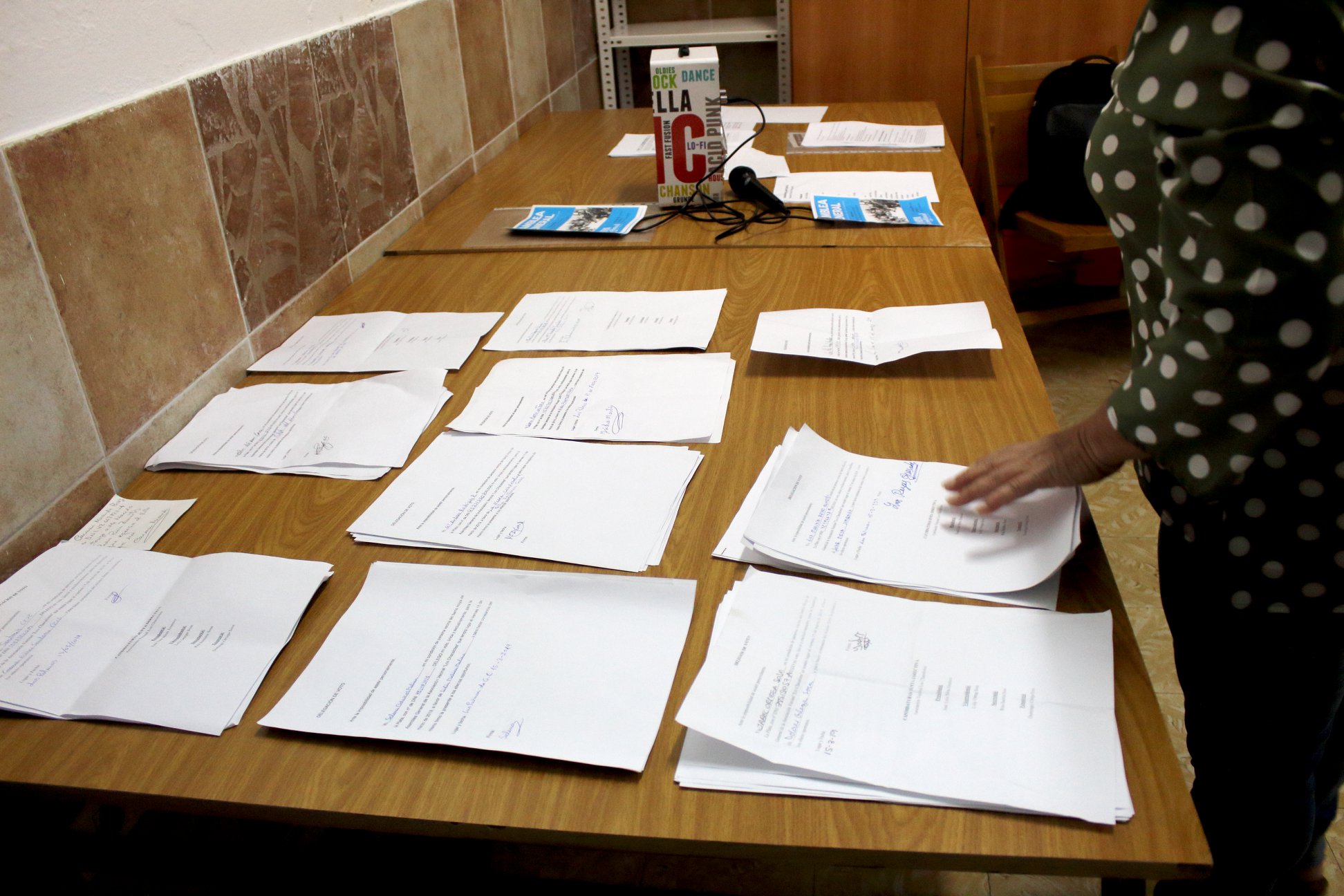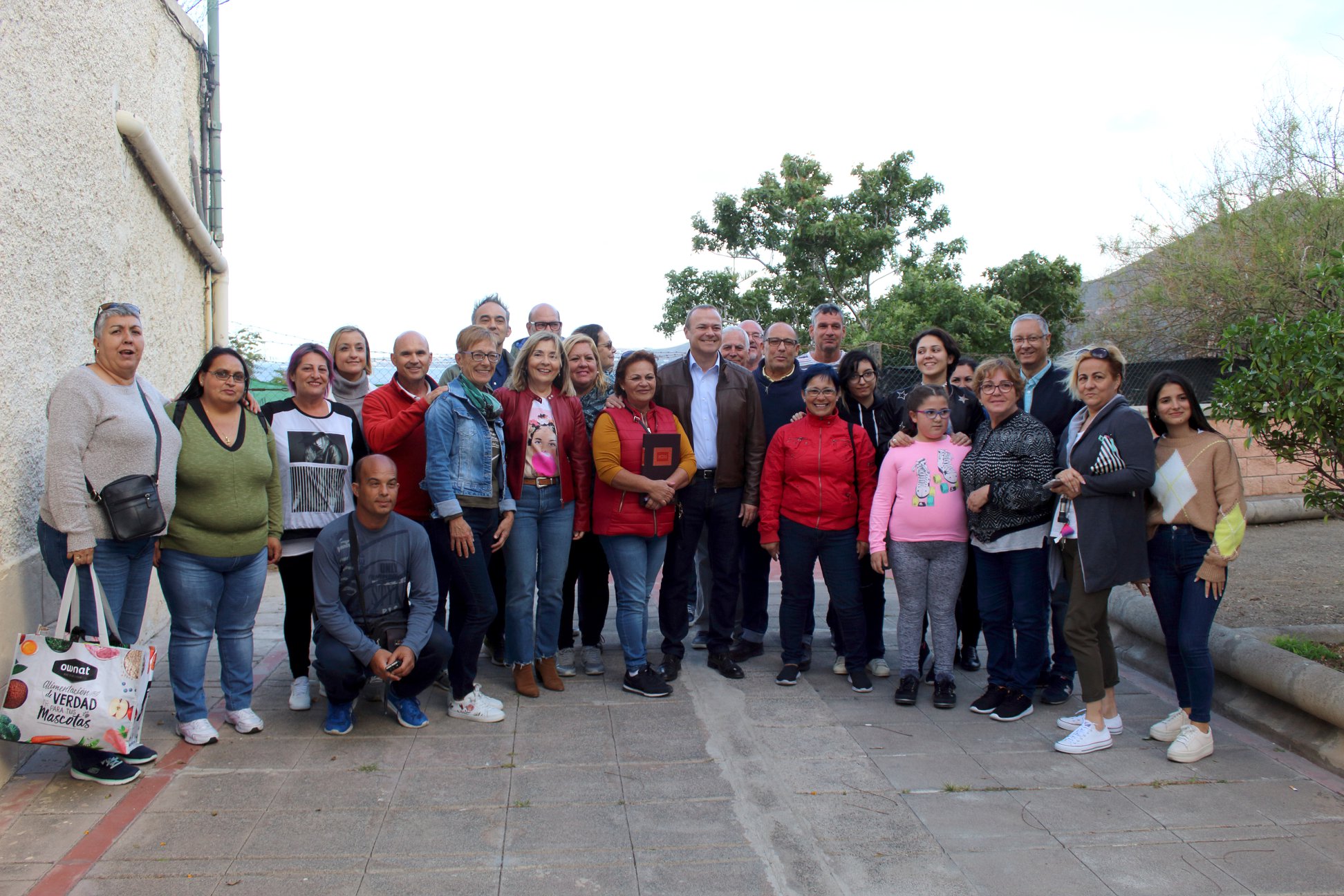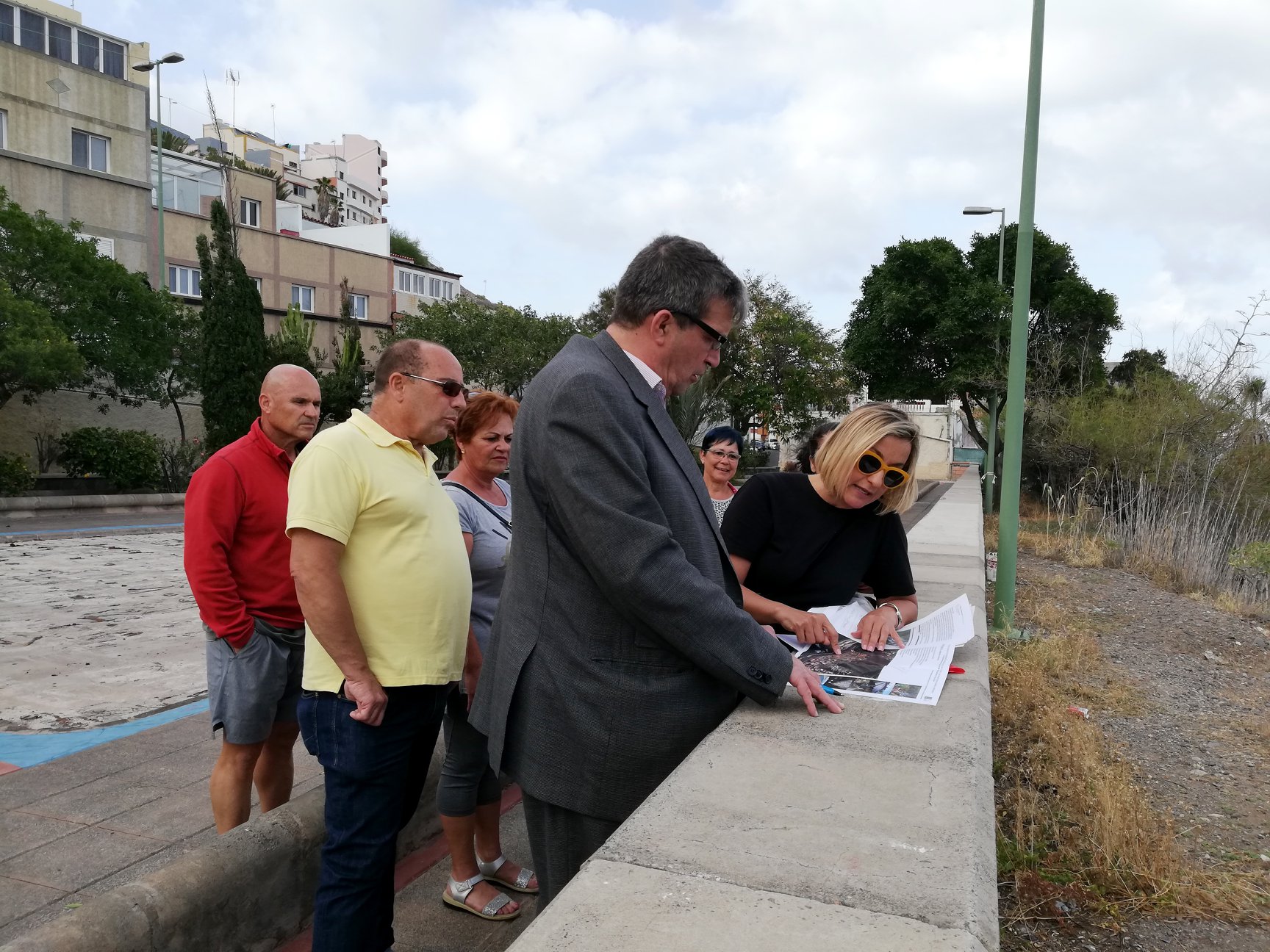NEIGHBOURHOOD PERFORMANCES
The Neighbourhood Performances are part of a participatory process that our team has recently started with the neighbours of the area of land houses in Hoya de la Plata, framed in the project “La Hoya Original”. After the successful process developed in the area of the urbanization, which is already working autonomously with the neighbourhood and cultural association La Hoya Horizontal, the association Hoya de la Plata Original has been founded in this other area ─based on this project and also with a high participation rate that has surpassed all our expectations─. The association has been named Hoya de la Plata Original because it is the area where the neighbourhood was born. Our aesthetic-social team, just as we did with its sister neighbourhood, has provided symbols of identity to the community, such as the logo of the association, based on consultations, debates and deliberations on the identity signs that they feel are theirs.
Dressed in canary-yellow work overalls and the logo of the association printed on their back, the neighbours have made three striking urban actions. Each of these neighbourhood performances puts the accent on one of the most urgent needs discussed in the participatory diagnosis that our team did in the neighbourhood.
«LIFE OR DEATH»
The first action “Life or death” draws attention to the great danger ─in terms of road safety─ that Hoya de la Plata has on the road that goes up to Salto del Negro, the street Párroco José C. Quintana Sánchez. This route turns out to be a street very busy by neighbours, for which children must cross daily, and by which vehicles drive at high speed. A speed breaker is demanded: the so-called sleeping policeman or speed humps.
«THERE ARE SMELLS THAT KILL»
The second action “There are smells that kill” denounces the bad smells to which the neighbourhood is subjected, due not only to the proximity of the municipal landfill, but also to the circulation of garbage trucks that are not properly sealed. The stench reaches the interior of the houses and it becomes unbearable. A change of route or any other solution to this public health problem is demanded.
«THE INVISIBLE PLACE»
The third action “The invisible place” affects one of the main problems that the citizens face in order to organize themselves and to carry a neighbourhood life: the lack of a social space in which to develop the activities of an association that is proving to be very active. The participatory design and construction of a building that welcomes these activities is demanded.
These aesthetic-social actions of a protest nature are presented as a visual reminder to the municipal authorities that visited the neighbourhood at the beginning of the participatory process and renewed their positions after the elections: the mayor Augusto Hidalgo and the councillors Javier Doreste, Lourdes Armas and the now councillor Prisco Navarro. We trust that these reminders will help to have the problems solved promptly.
The actions have had the support of the Department of Citizen Participation of the City Council of Las Palmas de Gran Canaria, thus assuming the institution that this area of the municipal government has to promote the democratic quality of the city and therefore considering the claim and constructive criticism as a democratic and participative value.
In the process of creation and execution of these performances, the creative and productive contributions of neighbours have been a constant, taking the level of participation in contemporary art beyond the mere assistance and performance by the public that assumes some rules previously dictated by the artist. Although they are based on ideas and aesthetic elements proposed by the PSJM team, which act here as technical experts in both art and participation, the debate and constant deliberation have granted certain degree of freshness and a very satisfactory aesthetic democracy.



